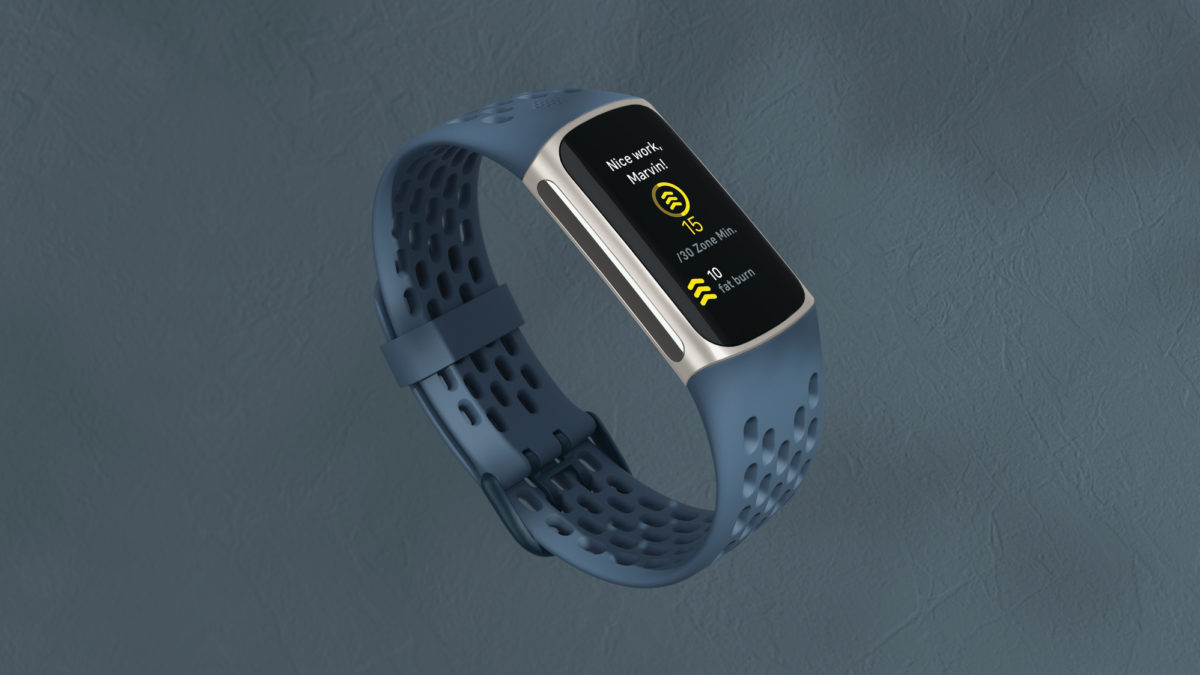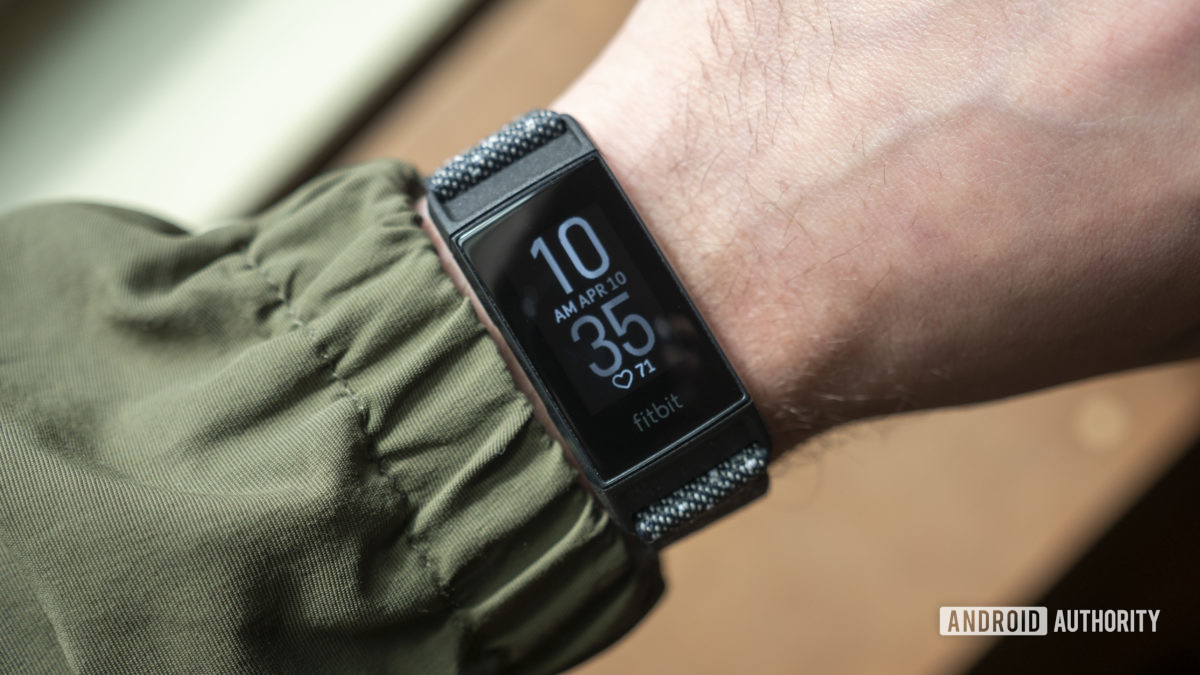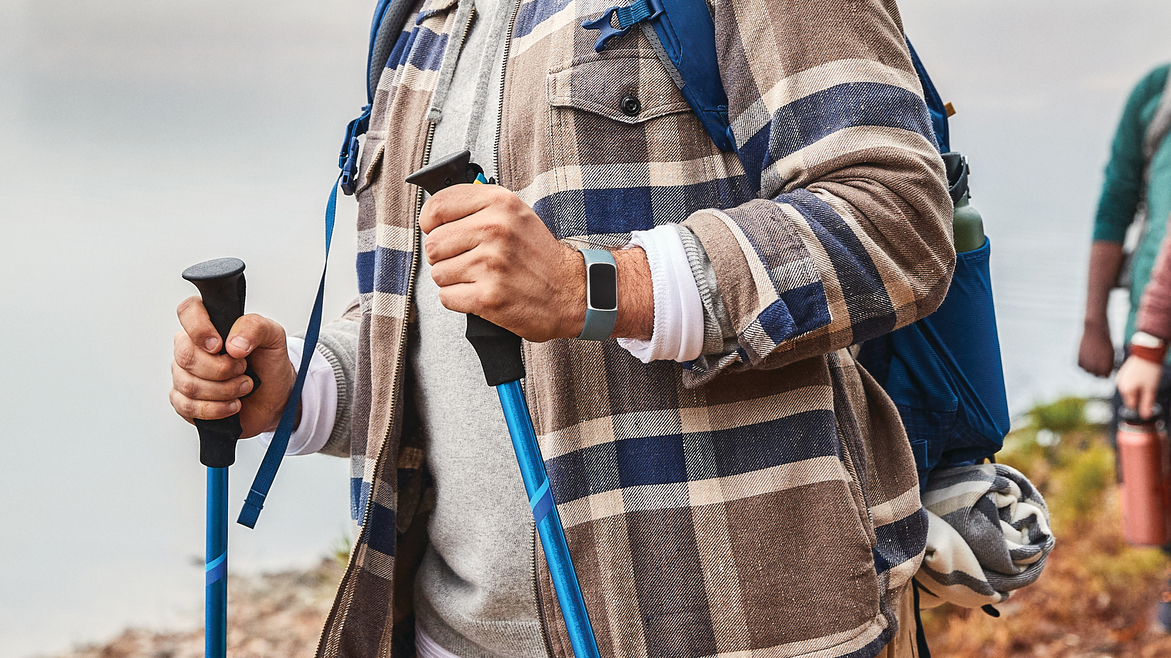Fitbit may have more powerful wearables in its stable nowadays, but the Charge line has a dedicated following that can’t be ignored. (Not everybody wants a big smartwatch-like screen.) The latest entry to the Charge line, the Fitbit Charge 5, brings many of the advanced health-tracking features you want at a size that will fit everyone’s wrists. Here’s everything you need to know about the Fitbit Charge 5.
Also read: The full Fitbit buyer’s guide
Fitbit Charge 5 at a glance
Same form factor, way better display
The Fitbit Charge 5 is a brand-new fitness tracker from the Google-owned company. Whereas the upgrade from the Charge 3 to the Charge 4 was nominal, the Charge 5 adds many hardware and software features that might make even existing Charge users contemplate an upgrade.
There’s a new AMOLED display, advanced sensors that can track your heart rhythms and stress, and a Daily Readiness Score that will attempt to clue you in to whether or not you should be exercising or resting on a particular day.
The Fitbit Charge 5 has a lot of nice features on paper, but you’d better like the idea of paying for a Fitbit Premium membership. Unfortunately, some of the new features are locked behind Fitbit’s infamous Premium paywall.
What’s new with the Fitbit Charge 5?

Let’s talk about aesthetics. The Fitbit Charge 5 fits squarely into the Charge family but adds design elements from the company’s higher-end Sense and Versa 3 devices. It still has a stainless steel case and removable straps, but all its corners are rounded to make for a much sleeker look.
Learn more: Fitbit Sense buyer’s guide
It’s 10% thinner than its predecessor, which was already a thin device, and boasts up to seven days of battery life on a single charge. That last metric is impressive, considering the Charge 5 is the first Charge device to come with a touchscreen AMOLED display. The display can get almost 2X brighter than the Charge 4’s grayscale OLED display, so outdoor visibility shouldn’t be an issue. Also, Fitbit included an always-on display option for the first time, making the Charge 5 seem much more like a smartwatch than a traditional fitness tracker.
Of course, there are new bands to coincide with the launch. Fitbit is offering silicone infinity and sport bands, nylon hook and loop bands, as well as Horween leather bands from its website.

The new headlining feature on the Fitbit Charge 5 is the company’s Daily Readiness Score. Using your daily activity, 24/7 heart rate data, heart rate variability, and sleep from the past several nights, the Charge 5 will attempt to tell you how “ready” you are for the day ahead. Should you really step outside for that long run? Or would it be more beneficial to rest? Your Charge 5 will inform you of its findings every morning, along with data on what impacted your score and suggestions on what to do for that particular day.
You’ll unfortunately need a Premium membership to use Fitbit’s new Daily Readiness Score.
Fitbit’s Daily Readiness Score is a lot like Garmin’s Body Battery feature, which uses similar data to give you a Body Battery score from 0-100 every morning. However, there’s one big difference between the two features: Fitbit is, unfortunately, locking its Daily Readiness Score behind the Fitbit Premium paywall, while Garmin’s Body Battery is free on all devices that support it. That means, after your free trial to Fitbit Premium is over, you’ll need to pay $10 a month to access the feature again. Boy, is it getting expensive to own a Fitbit device.
That said, the Daily Readiness Score feature won’t be available at launch on the Fitbit Charge 5, and it’s also “coming soon” to the Sense, Versa 3, Versa 2, Luxe, and Inspire 2 devices.
The Fitbit Charge 5 also boasts two sensors that arrived first on last year’s Fitbit Sense smartwatch: electrodermal activity (EDA) and electrocardiogram (ECG) sensors.
The EDA sensor measures your body’s stress levels by applying small electrical charges to your skin to see how they interact with your body’s sweat levels. Research shows that electrodermal activity is closely linked to our emotional state and can be a good indicator of stress. However, in our testing on the Fitbit Sense, the EDA sensor didn’t quite stack up to more traditional stress trackers that are based on heart rate variability data. It may be a different case with the Charge 5, so stay tuned for our full review for those results.
The Fitbit Charge 5 also ships with an ECG monitor to measure your heart rhythms on-demand throughout the day. If you have a heart condition, this sensor can be invaluable for detecting early signs of AFib. (Although, you should still absolutely see a doctor if you sense an issue with your heart.)
Related: What is an ECG and why does it matter?
One more thing — the EDA sensor should be enabled out of the box when the Charge 5 launches this Fall, but the ECG monitor will not. We’ll update you when we hear back from Fitbit as to when the ECG monitor will be available for use.
Alongside the launch of the Charge 5, Fitbit is adding 25 new high-energy workouts from Les Mills to Fitbit Premium. All 25 workouts are available for all Premium subscribers today. Arriving next month, Fitbit is also adding 30 pieces of content from Calm, which will be available in seven languages. Calm can be a pricey platform on its own ($70 a year or $400 for life), so if you’re a Calm fan, this might be a cheaper way to gain access to the service.
Fitbit Charge 5 vs Charge 4: What’s the difference?

The Fitbit Charge 5 is the direct successor to the Charge 4, so as you can imagine, the two trackers share many features.
They both feature 20 exercise-tracking modes and offer automatic activity recognition for a select few workouts. They both offer standalone GPS and connected GPS, 24/7 heart rate monitoring, and offer alerts when they sense your heart rate is too high or too low at any point throughout the day.
Both devices offer Fitbit’s robust suite of sleep tracking features as well. They’ll track your sleep stages throughout the night and give you a sleep score in the morning based on how well you slept.
Smartwatch features are limited, but that’s to be expected on smaller fitness devices. They both offer Fitbit Pay (no special edition model needed) and smartphone notifications. You can also respond to messages from your wrist if your Fitbit is paired to an Android phone.
Also read: How to receive messages and send replies from your Fitbit device
What are some good Fitbit Charge 5 alternatives?

Not keen on the latest from Fitbit? Luckily, there are plenty of Fitbit Charge 5 alternatives worth considering.
- Fitbit Charge 4: The Fitbit Charge 4 has many of the same features as the Charge 5, although the grayscale OLED is a pretty big downgrade. However, since it’s last year’s tracker, it can regularly be found on sale.
- Xiaomi Mi Band 6: Looking for something a little cheaper? The Xiaomi Mi Band 6 is our current pick for the best cheap fitness tracker you can buy. It has fantastic battery life, an accurate heart rate sensor, and a big, colorful display — all at a fraction of the price of the Charge 5.
- Huawei Band 6: The Huawei Band 6 has a big, bright display, plenty of sport-tracking modes, and all-day SpO2 monitoring, which is something not found too often at this price point.
Where to buy the Fitbit Charge 5

Same form factor, way better display
The Fitbit Charge 5 is available for pre-order in the United States for $179.95 from Fitbit.com and other retailers. Fitbit has not provided an exact release date, aside from the fact that the device will launch in North America in late September and worldwide “this Fall.”
It comes in Blue Steel/Platinum, Black/Graphite, and Lunar White/Gold color options. There’s no special edition model this year, so all Fitbit Charge 5s are created equal.
Don’t miss: Is Fitbit Premium right for you?
As with all new Fitbits, the company is throwing in a free six-month trial to Fitbit Premium (new users only). After your trial period is up, Fitbit Premium costs $9.99 a month or $79.99 a year.
Top Fitbit Charge 5 questions and answers

Q: When is the Fitbit Charge 5 release date?
A: Fitbit has not clarified an exact Fitbit Charge 5 release date. The company says it will be available in North America in late September and that international availability may vary.
Q: How long does the Fitbit Charge 5 battery last?
A: According to Fitbit, the Charge 5’s battery can last up to seven days on a single charge. Of course, this will depend on your usage.
Q: Is the Fitbit Charge 5 waterproof?
A: The Fitbit Charge 5 has a 5ATM water-resistance rating.
Q: Are the Fitbit Charge 5 bands interchangeable?
A: Yes, you can swap out your Fitbit Charge 5 bands for first- or third-party bands of all kinds.
Q: Is the Fitbit Charge 5 compatible with iPhones?
A: Yes, the Fitbit Charge 5 is compatible with iPhones. However, you’ll get the best experience by pairing it to an Android phone.
Q: Does the Fitbit Charge 5 have GPS?
A: Yes, the Fitbit Charge 5 has standalone GPS as well as connected GPS.
Q: Can the Fitbit Charge 5 be used for swimming?
A: Yes, the Fitbit Charge 5 can track various swimming exercises.
Q: Can the Fitbit Charge 5 detect atrial fibrillation (AFib)?
A: Yes, the Fitbit Charge 5 can detect potential early warning signs of AFib using its ECG sensor. However, the ECG feature won’t be available at launch.
Q: Can the Fitbit Charge 5 play music?
A: The Fitbit Charge 5 can control music playing on your connected smartphone, though it does not support onboard music storage.